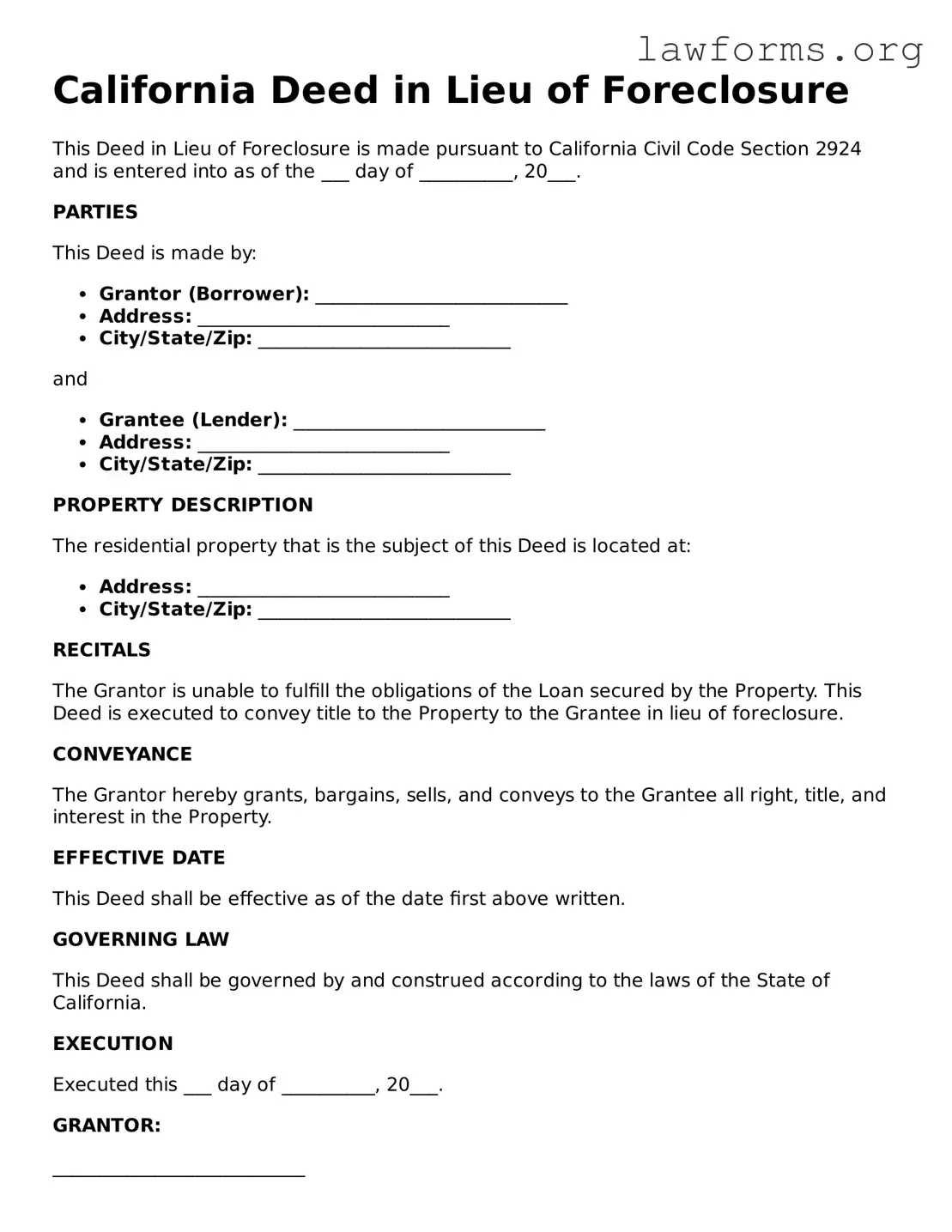California Deed in Lieu of Foreclosure
This Deed in Lieu of Foreclosure is made pursuant to California Civil Code Section 2924 and is entered into as of the ___ day of __________, 20___.
PARTIES
This Deed is made by:
- Grantor (Borrower): ___________________________
- Address: ___________________________
- City/State/Zip: ___________________________
and
- Grantee (Lender): ___________________________
- Address: ___________________________
- City/State/Zip: ___________________________
PROPERTY DESCRIPTION
The residential property that is the subject of this Deed is located at:
- Address: ___________________________
- City/State/Zip: ___________________________
RECITALS
The Grantor is unable to fulfill the obligations of the Loan secured by the Property. This Deed is executed to convey title to the Property to the Grantee in lieu of foreclosure.
CONVEYANCE
The Grantor hereby grants, bargains, sells, and conveys to the Grantee all right, title, and interest in the Property.
EFFECTIVE DATE
This Deed shall be effective as of the date first above written.
GOVERNING LAW
This Deed shall be governed by and construed according to the laws of the State of California.
EXECUTION
Executed this ___ day of __________, 20___.
GRANTOR:
___________________________
Signature of Grantor
GRANTEE:
___________________________
Signature of Grantee
Witnessed by:
___________________________
Signature of Witness
___________________________
Name of Witness
